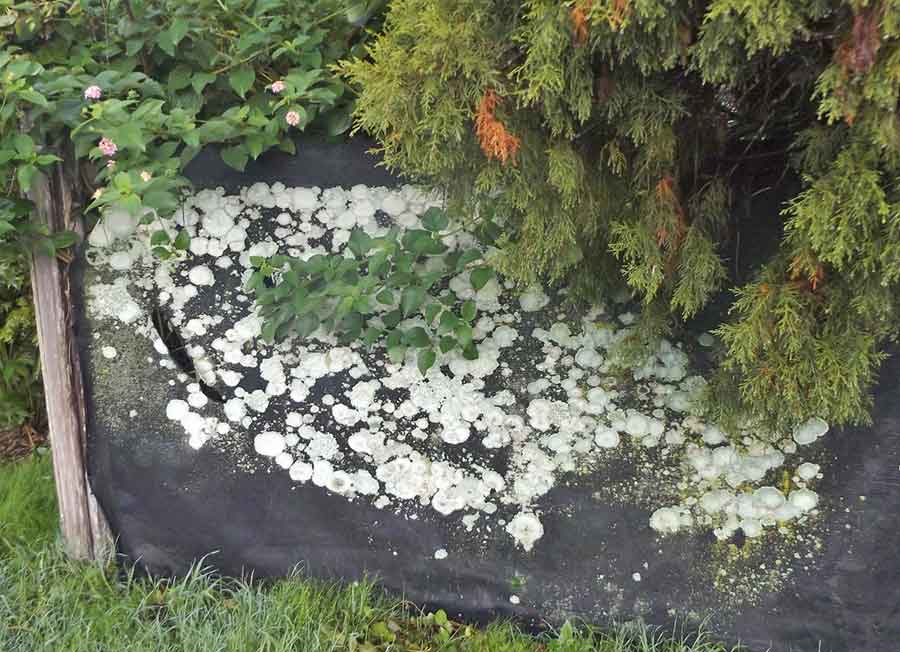
On my morning walk, this unusual decorative wall drew me across the road for a closer look. It looked intentional, with the defined cut-off line at the top.
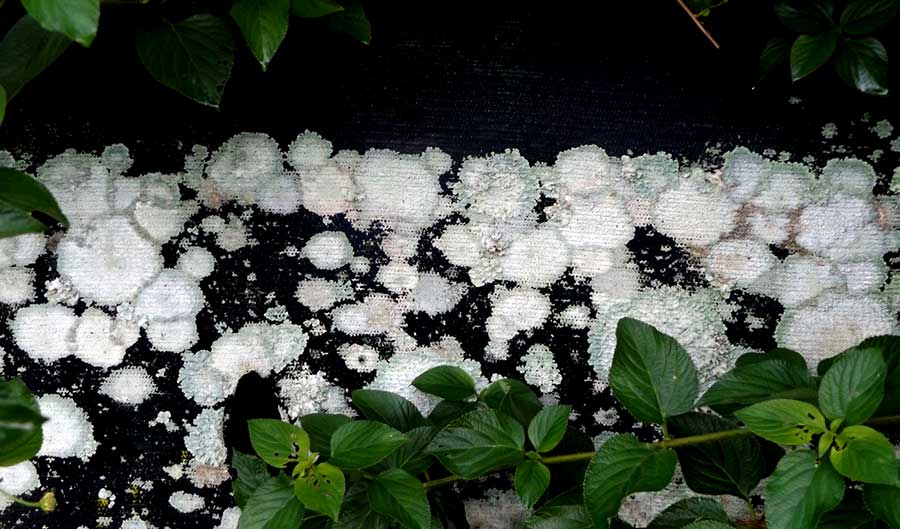
But in fact it was not made by man, but by Nature. It proved to a most painterly smattering of lichens, opportunistically taking over a stretch of black shadecloth.
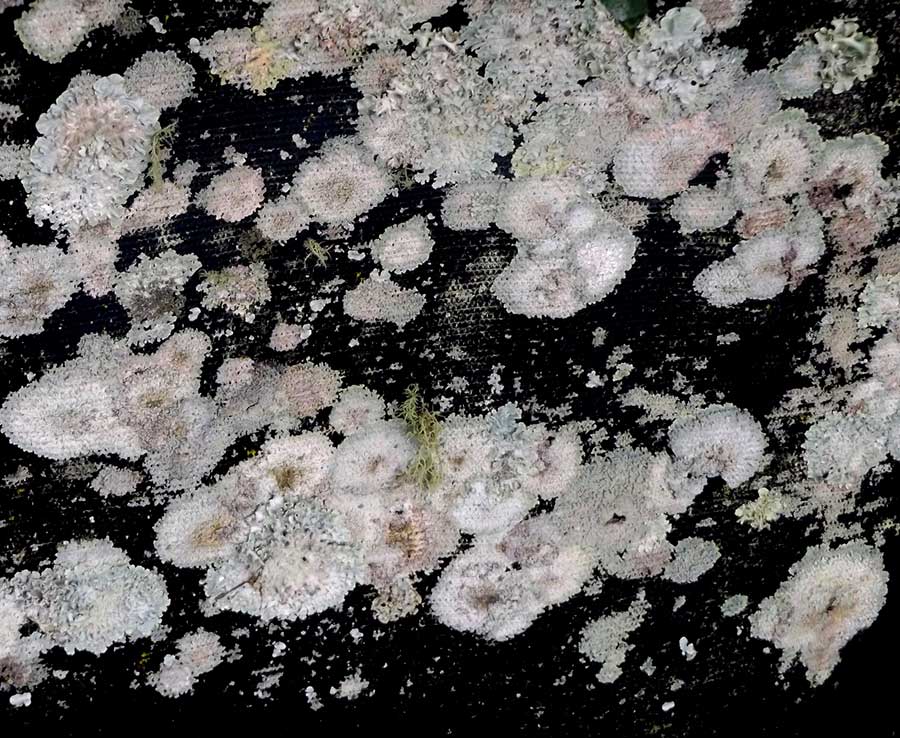
Up close, the lichen was both pretty and delicately varied, the shadecloth host giving it the effect of paint on canvas.
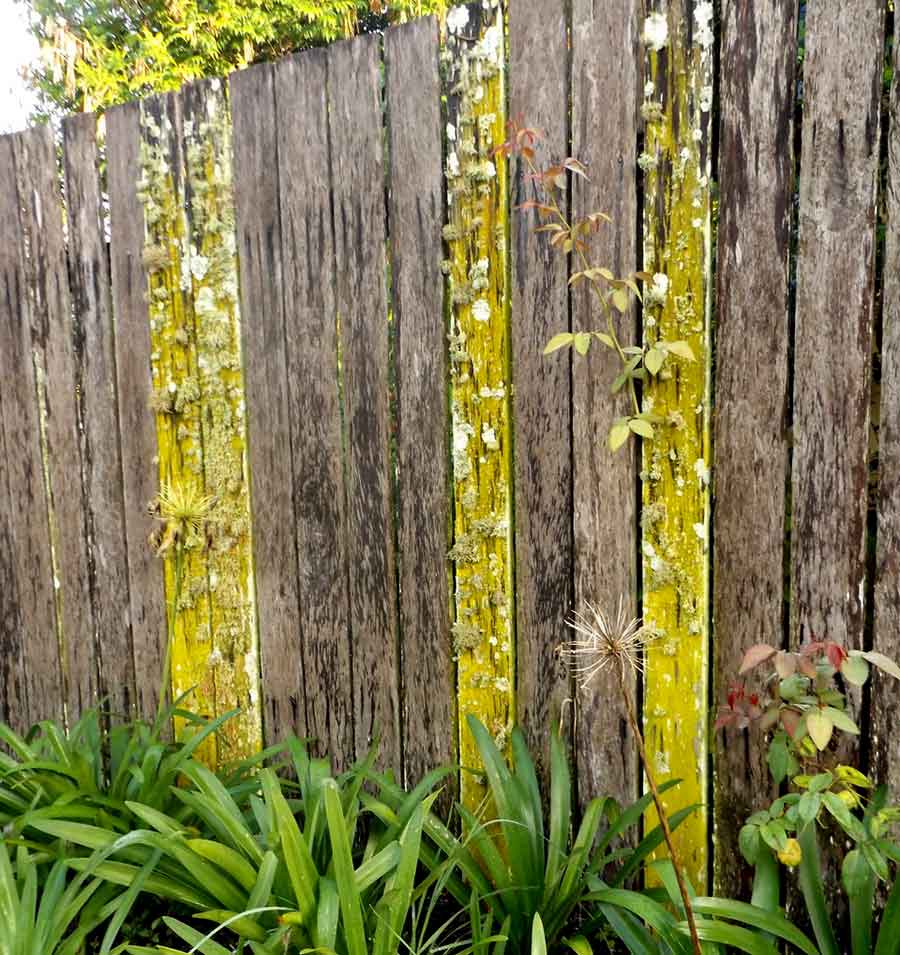
Further along the road, different lichen had ‘painted’ just four of a whole fence of timber palings. What did they have that the others didn’t?
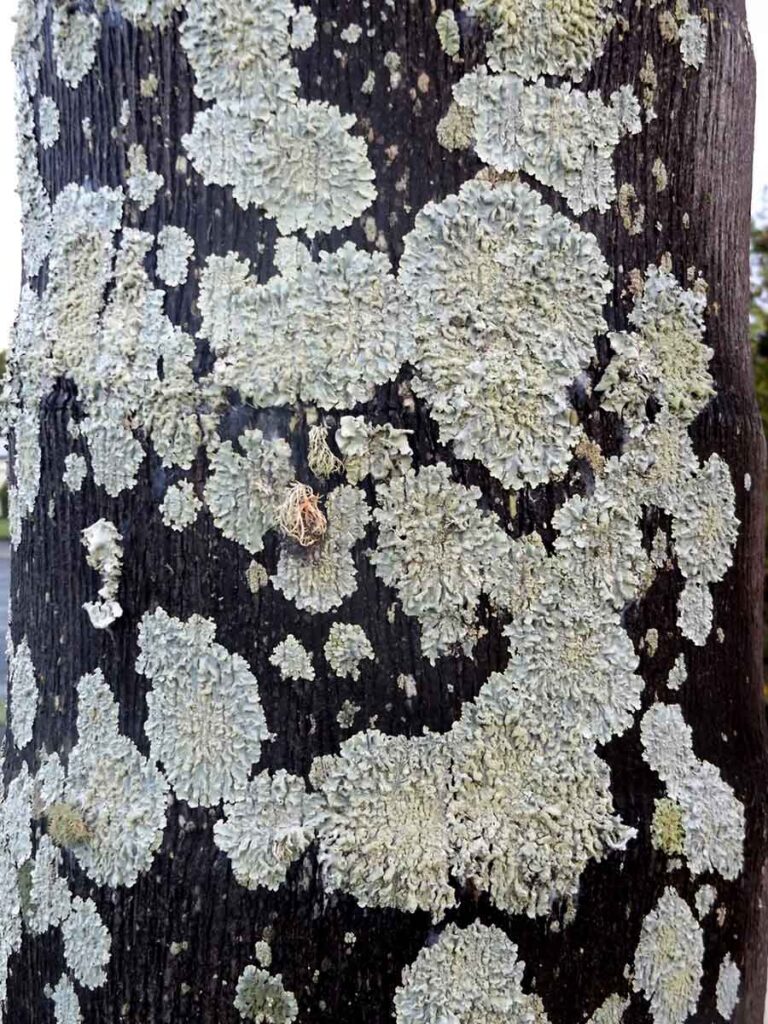
Of course we are most used to seeing lichen on trees, as here on the south side of a palm tree in that same street.
Lichen is not a parasite, so it does not harm the trees.
Lichens are formed from a symbiotic relationship between two organisms — fungus and algae. The fungus grows on the tree and can collect moisture, which the algae needs. The algae, in return, can create food from the energy of the sun, which feeds the fungus.
How clever is that?!
Thanks for those insights Louise and Colleen! As a Knitting Nanna, Louise, you’d know about wool dyeing! I agree that lichens colour our world in the most interesting ways. And I had not seen the photo that way Colleen, so now I do. Thanks!
I adore lichens. These look so interesting! There are two long deckchairs outside in our garden with lichens slowly consuming them…to me they are an artwork.
Lichens were used to colour wool too.
The lichen on the fence palings looks like gaps in the fence giving a view through to what’s beyond. That’s an interesting image.